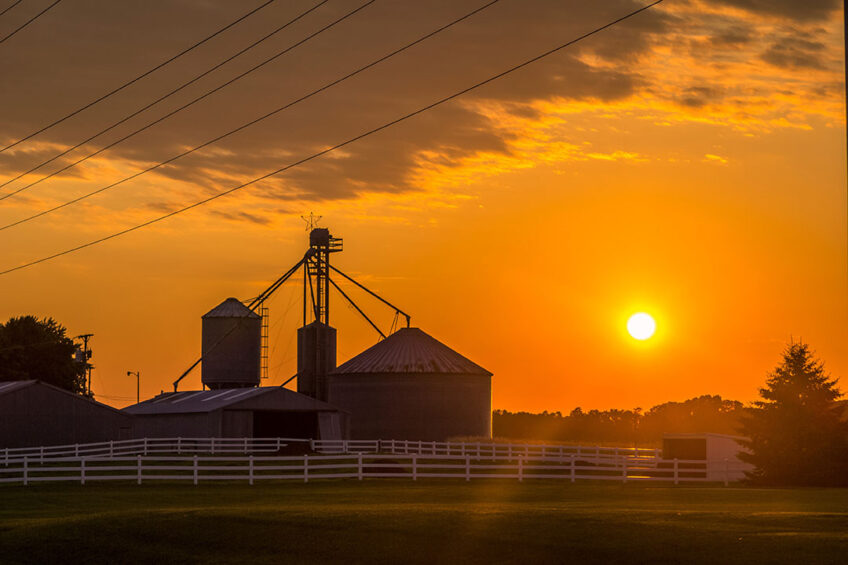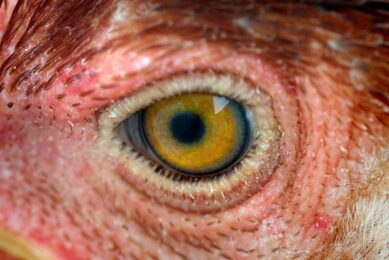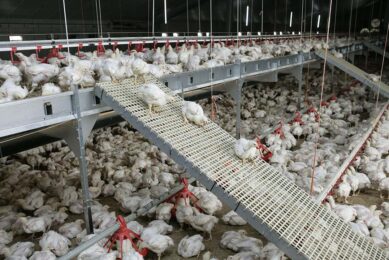Aiming for top performance all summer long

The summer period is a welcome arrival for many, but for livestock it can be a time that adversely affects their performance, not just in the summer, but also into the following autumn and winter months. As animal performance increases, against a backdrop of changes in the climate with unpredictable weather; from extreme heat waves to high humidity days, it becomes a challenge to combat the issues associated with heat stress.
Recognising the thresholds at which heat stress is triggered, as well as a better understanding of the behavioural and physiological factors affecting livestock, has enabled Cargill to develop management and nutritional programmes to support animals during spring and summer to keep animal performance on target.
Heat-stress threshold
While it is tempting to attribute heat stress solely to high temperatures, it is actually a combination of temperature and relative humidity that can cause problems. The temperature humidity index (THI) is taken as an industry benchmark for assessing heat stress in livestock systems.
Feeling the heat
The most obvious signs of heat stress; animals will deviate from their usual routines. Like less time spent walking and eating. Cooler areas will be favoured, and outdoor farmed animals will look for shade.
Lower feed intakes and physiological changes related to heat stress will lead to dips in fertility in breeding livestock, and milk, egg and weight gain reductions across species. Longer term effects on fertility, and even epigenetic effects on progeny, can be seen. While housed livestock is considered most at risk, those in outdoor systems can also be affected. And we also know that the consequences of heat stress can be experienced earlier in the season and extend for a much longer period than previously thought.

Heat stress in cows
Recent dairy cow data, for example, has highlighted that fertility can be adversely affected from as low as THI 57. A study of 22,212 high yielding Holstein cows in 15 large-scale dairy herds in Germany, from 2013 to 2015, showed that when average daily THI exceeded 57 (for example 14°C at 60% relative humidity) oestrus activity reduced, leading to reduced submission rates and fewer inseminations. Reduced conception rates were also recorded from a THI 65, equivalent to 20°C at 60% relative humidity. If temperatures reach 22°C, then up to 20% of cows can miss a breeding cycle. And at 27°C this figure is estimated at 43%.
Heat stress in swine
In pigs, heat stress is experienced when the outside temperature is higher than the pigs’ skin temperature coming from heat from conduction, between the pig and the floor, convection and radiation. The comfort zone temperature will depend on pig age and production phase. In breeding units, the consequences of heat stress will manifest themselves in a fall in fertility performance and this is seen at a lower critical temperature than had previously been thought.
Figure 1 shows that feed intake in lactation sows starts to fall from 22°C. This in turn results in lower milk production leading to worse litter performance.
Figure 1 – Consequence of heat stress on lactating sows.

Heat stress in poultry
In poultry, 70% of heat is exchanged via convection, conduction or radiation at temperatures between 10°C and 28°C. Once temperatures rise above 28°C, 80% of this heat exchange in poultry is through panting. The physiological effects of heat stress reduce gut integrity and the birds’ antioxidant status. Combined with the excessive increase in body temperature, this results in reduced meat quality in broilers and reduced egg weight, production and eggshell quality in layers. Mortality rates also increase.
Tackling heat stress
Mitigating heat stress is multifactorial and is a combination of environmental control, farm management and nutrition.
Solutions for dairy
Managing heat stress in dairy cattle of all ages requires well-ventilated buildings and, for outdoor systems, areas of shade. Adequate supplies of clean water and plenty of trough space are essential. Efficient fans should be used to keep the air circulating in buildings – particularly in collecting and milking areas. And feed should be fresh and pushed up regularly to encourage feed intake.
Cargill’s summer feeding solutions* have a unique blend of internal cooling elements and buffering agents which have a positive impact on performance; by maintaining feed intake, milk production and fertility.
Included in the TMR, or in compound feed, Cargill’s solutions help regulate core body temperature by hydrating the cow at the cellular level, and by restoring the electrolyte balance, along with unique fast-acting, long-lasting buffering agents that support rumen function and maintain feed intake.
In UK trials, they also helped maintain milk fat when compared to the control group with fat-and-protein corrected milk yield 0.5kg higher on average in the summer solution throughout the trial, and 1.5kg higher during the highest THI weeks. Additionally, pregnancy rate among the summer solution was higher resulting in a reduction in days to conception of 17 days compared to the control group.
Solutions for pigs
Reducing stocking density and well-maintained climate control systems will alleviate potential heat-related issues in pig units.
Furthermore, adjusting work patterns, to avoid moving and feeding pigs during the hottest parts of the day and in lactating sows, more frequent feeding can encourage intake. Increasing water availability has been shown to increase feed intake and piglet growth rates. In finishers, more water availability has increased feed conversion rate (FCR) by 7.5%.
Diets can also be modified to help alleviate heat stress related problems. Cargill has developed its seasonal feed programmes with its nutritional solution Coolpig at the core of this. Added to sow and grower finisher diets, this has been shown to promote feed intake and litter performance, with higher litter weights at weaning. It has also resulted in more even batches of finisher pigs with higher carcass weights.
Coolpig contains specific additives that improve feed intake. Moreover, it promotes gut integrity, which can be challenged in periods of heat stress, and it supports lower respiratory alkalosis, facilitating glucose use and improved energy efficiency. In farm trials in Europe, it has shown to increase sow intakes by 9.1% and increase piglet liveability by 3%, as well as litter weight at weaning by 2.3kg. This equates to a return on investment (ROI) of 6:1 in sows. A 2.4:1 ROI in finisher pigs has resulted from an increase in feed intakes of up to 10kg in the 16kg to 110kg range.
Solutions for poultry
To counter a reduction in feed intake and the associated implications of potential nutrient deficiency in birds, Cargill’s poultry feed programmes focus on rebalancing ingredients such as crude protein, amino acids, such as lysine and betaine, oil content and energy and the inclusion of complimentary feed additives.
Specific heat-stress related benefits are derived from some ingredients, like the osmo-protectant ability of betaine that promotes the water holding ability of cells. This prevents damage to proteins and enzymes from high electrolyte levels.
A few days ahead and during heat-stress risk periods vitamin C, and the Cargill-developed liquid feed products D-Mite for controlling red mite, and Almaril Plus can be added to water systems at the recommended rates.
This rehydrating product can be used in all poultry systems; it contains also natural antioxidants and energy for a booster effect. Due to its high palatability, it encourages water consumption by providing the vital electrolytes to help water exchange and regulates osmotic pressure by providing glucose and betaine. Figure 2 shows an example of the impact of heat stress on the antioxidant balance.
In Cargill trials, the weights of chicks at 36 days increased by 20.5g when Almaril Plus was used at a rate of 1.5ml per litre compared with a no-product control.
Cargill’s heat stress programme for poultry also focuses on specific recommendations in farm management and ventilation systems to alleviate heat stress.
Figure 2 – Oxidative stress, disruption of the anti-oxidants/free radicals balance.

Management and nutritional solutions
Recognising the conditions that pertain to heat stress and some of its hidden consequences, which may be witnessed long after the summer ends, has enabled Cargill to develop programmes for each species that can help producers mitigate its negative effects – now and into the future.
Being prepared early in the season and implementing management and nutritional changes from mid-spring to support livestock throughout the summer, is good practice.
*Cargill dairy summer solutions include Rupromin CoolCow, Equaliser CoolCow (UK & Ireland) and Refresh (France). Get in touch with your area rep for more information.
Authors:
Graziano Mantovani, Mark Scott and Beatrice Payoux, Cargill
Join 31,000+ subscribers
Subscribe to our newsletter to stay updated about all the need-to-know content in the poultry sector, three times a week. Beheer
Beheer





 WP Admin
WP Admin  Bewerk bericht
Bewerk bericht